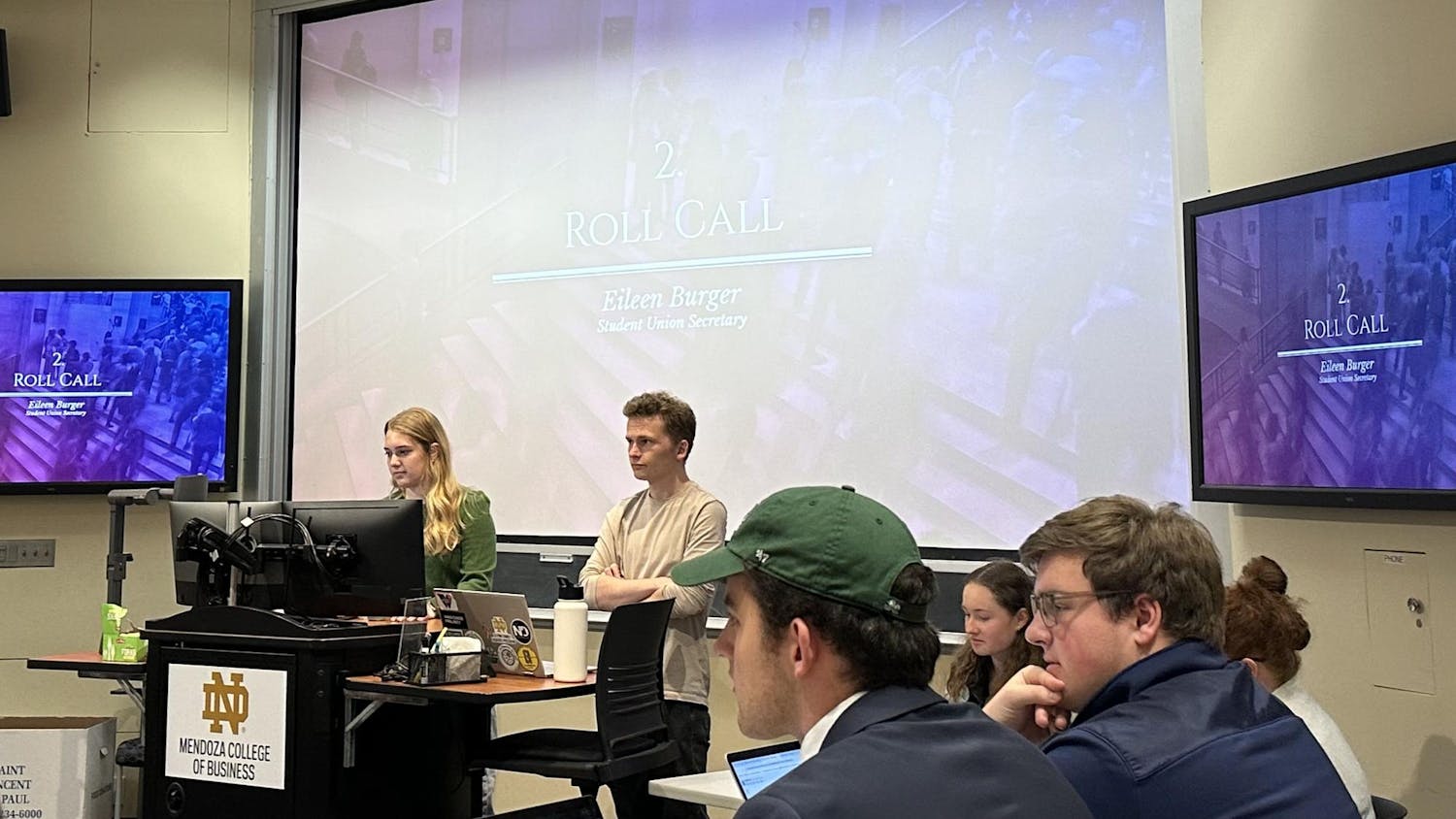Notre Dame professor of physics Boldizsár Jankó’s work with quantum properties of a nanoscale superconductor-ferromagnet system was recently published in “Nature Scientific Reports.”
“It’s an example of taking two materials that are very different ⎯ superconductors have zero resistance, they expel magnetic fields, [and] they get weaker,” Jankó said. “Ferromagnets are anything but that ⎯ they have strong magnetic fields. So the question was, ‘What happens when you take some substrate and you put a nanometer-sized magnet on it?’”
The basic design of the system Jankó’s team investigated involved a superconductor laid out like flat film with a pancake-shaped nanomagnet disk on top of this substrate, with the north and south poles of the nanomagnet corresponding to the top and bottom of the disk, he said. Given the antagonistic nature of these two materials, the team was curious to see what the result of this clash would be at such a small scale.
“What the superconductor does [is] shield this magnetic field, so you basically induce a current in the superconductor,” Jankó said. “So the total magnetic field is almost zero in the superconductor, but there is a spontaneously generated current.”
The result of this induced current is a weakened state in the superconductor wherever it flows, and a plot of the strength of the superconductor over different regions revealed a “Mexican hat”-shaped potential, Jankó said. The geometry of this potential is characterized by a peak signal directly under the nanomagnet, surrounded by a valley of weaker strength that gives way to a strong signal on the circular boundary.
“When I looked at this ‘Mexican hat’ potential I said, ‘That’s just amazing, I haven’t seen anything like this,’” Jankó said. “So my first thought was that this ‘Mexican hat’ potential is going to trap exotic particles, and that’s what we saw.”
The striking part of the microscopic materials medley investigated by Jankó’s team is that it behaves as a quantum analog to the classical rotor model, which is equivalent to tying a string to a rock and swinging it around in a circle, Jankó said.
“The other thing we noticed is that you can put a supercurrent on to the superconductor, and [it] results in tilting of the ‘Mexican hat,’” Jankó said. “It weakens the superconductor on one side so that you have a deeper well and strengthens it on the other.”
Jankó said this happens because the current flowing through the superconductor induces its own magnetic field, which changes the existing field around the nanomagnet.
“That’s the classical view. What we found, quantum-mechanically, is that is true ⎯ but there are also more particles on the other side as well,” Jankó said. “It turns out that you are basically breaking the left-right symmetry, and these states are an equal superposition of left-rotating and right-rotating particles. So the quantum mechanical rotor goes in both directions.”
The classical analog in this situation would be that of a billiard ball rolling back and forth in the groove of the tilted side of the Mexican hat ⎯ but now also rolling back and forth on the other side as well, similar to two oscillating pendulums instead of the single rotor, Jankó said. This dual-pendulum model prompted Jankó’s team to explore possible relations to chaos in the system.
“We immediately thought of a connection to chaos because a kicked pendulum is chaotic,” Jankó said. “Its motion is extremely sensitive to a kick. Luckily, quantum mechanics makes things a lot simpler in this case. For a quantum mechanical particle that’s spread all over the place, it couldn’t care less about being chaotic. There are no initial conditions; it just has maybe a slightly different structure of the wave function.”
In general, it is possible to go from a chaotic classical system to a quantum mechanical analog, but going back the other way is a far more difficult question, he said.
“Here what we are saying is that we discover rotor states, pendulum states, and the pendulum can be made chaotic if you put impulses into the current to start driving the system,” Jankó said. “And in fact, we managed to describe the quantum-mechanical analog of this inverted pendulum ⎯ basically you have a rod and an object at the end of this rod, and you can stabilize this otherwise classically unstable inverted position. So if you perform the drive of this hinge, you can stabilize this state and have a stable inverted pendulum, called the Kapitza pendulum.”













